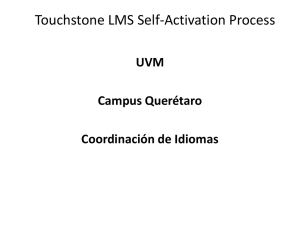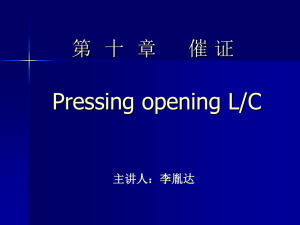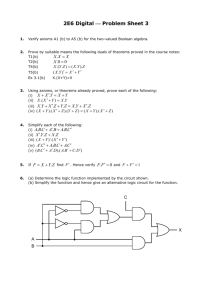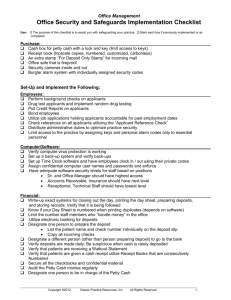EDB Construction Checklist - Colorado Stormwater Center
advertisement
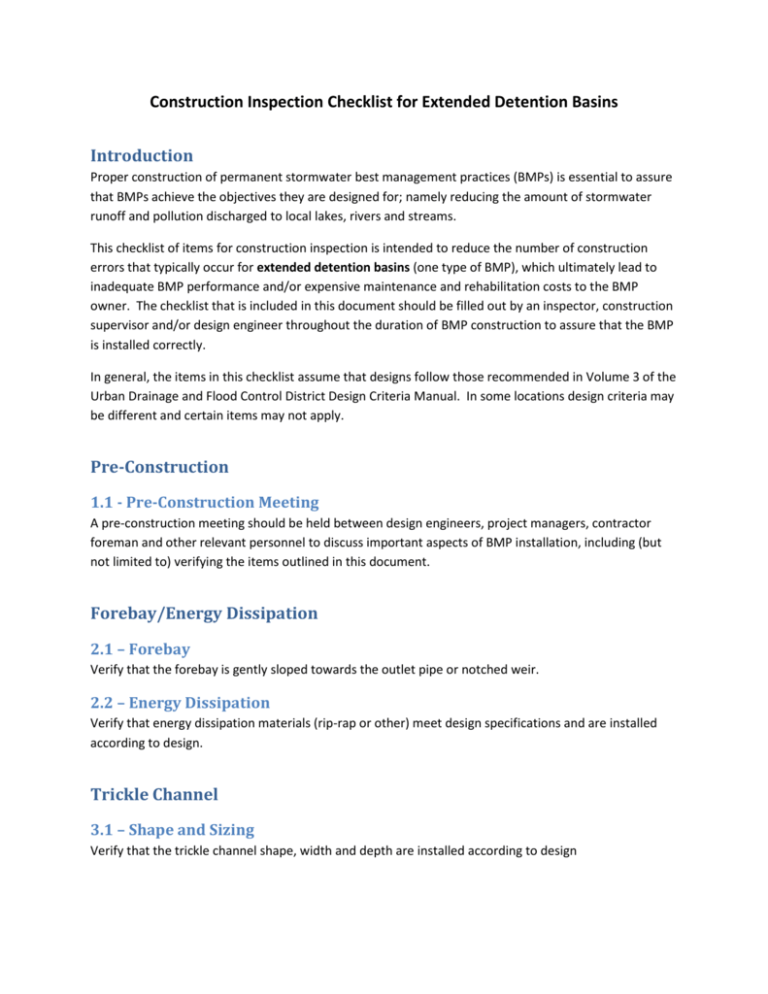
Construction Inspection Checklist for Extended Detention Basins Introduction Proper construction of permanent stormwater best management practices (BMPs) is essential to assure that BMPs achieve the objectives they are designed for; namely reducing the amount of stormwater runoff and pollution discharged to local lakes, rivers and streams. This checklist of items for construction inspection is intended to reduce the number of construction errors that typically occur for extended detention basins (one type of BMP), which ultimately lead to inadequate BMP performance and/or expensive maintenance and rehabilitation costs to the BMP owner. The checklist that is included in this document should be filled out by an inspector, construction supervisor and/or design engineer throughout the duration of BMP construction to assure that the BMP is installed correctly. In general, the items in this checklist assume that designs follow those recommended in Volume 3 of the Urban Drainage and Flood Control District Design Criteria Manual. In some locations design criteria may be different and certain items may not apply. Pre-Construction 1.1 - Pre-Construction Meeting A pre-construction meeting should be held between design engineers, project managers, contractor foreman and other relevant personnel to discuss important aspects of BMP installation, including (but not limited to) verifying the items outlined in this document. Forebay/Energy Dissipation 2.1 – Forebay Verify that the forebay is gently sloped towards the outlet pipe or notched weir. 2.2 – Energy Dissipation Verify that energy dissipation materials (rip-rap or other) meet design specifications and are installed according to design. Trickle Channel 3.1 – Shape and Sizing Verify that the trickle channel shape, width and depth are installed according to design 3.2 – Slope Verify that trickle channel is sloped (continuously) towards the outlet structure. Micropool 4.1 – Size and Depth Verify that the micropool’s length, width and depth are installed according to design. 4.2 – Invert Elevation Verify that the micropool invert elevation is below the trickle channel (generally 1-3 feet) Outlet Structure 5.1 – Well Screen Verify dimensions and type of well-screen against design specifications. Visually verify that well screen openings are smaller than openings on the orifice plate. 5.2 – Well Screen (with micropool) Verify that well screen extends all the way to the bottom of the micropool. Note: This only applies if the design includes a micropool. 5.3 – Water Quality Capture Volume (WQCV) Orifice Plate Verify the number and size of orifices against design specifications. 5.4 – Water Quality Capture Volume (WQCV) Orifice Plate (with micropool) Verify that orifice plate is installed correctly. The bottom-most orifice(s) should be located at the design water surface elevation of the micropool. Note: This only applies if the design includes a micropool. 5.5 – Well Screen/Orifice Plate Cap Verify that a metal cap/plate is installed on top of the opening between the well screen and WQCV orifice plate. 5.6 – Trash Rack Verify dimensions and type of trask rack against design specifications. 5.7 – Signage Verify that “outlet structure modification” warning sign is installed per design specifications. Note: Not all municipalities require this type of signage. Emergency Overflow/Spillway 6.1 – Weir Length and Depth Verify that length and depth of emergency overflow weir is per design specifications. 6.2 – Elevation Verify that emergency spillway elevation is lower than the rest of the basin embankments/walls and higher than the outlet structure overflow. 6.3 – Energy Dissipation Verify that rip-rap or other energy dissipation methods are installed downstream downstream of the emergency spillway, per design specifications. Final Landscaping 7.1 – Construction Sediment Removal If the EDB was used for construction sediment control, verify that all construction sediment has been removed from the basin and that the upstream catchment is stable prior to conducing final landscaping. 7.2 – Vegetation Verify that seeding was done at appropriate rates, per landscape design specifications. 7.3 – Irrigation Verify that irrigation is in place (permanent or temporary) to ensure proper establishment of vegetation. Close Out 8.1 – Upstream Catchment Stabilization Verify that construction activities in the upstream catchment have been completed and that landscaped areas have been properly vegetated or otherwise stabilized, prior to removing temporary sediment control BMPs. Construction Inspection Checklist for Extended Detention Basins Project: ______________________________ Site: __________________________________ Inspector: ____________________________ Company: ______________________________ No. Item/Activity 1.1 Pre-construction meeting held to discuss BMP installation, inspection and checklist Pass Fail N/A Date Pre-Construction Forebay/Energy Dissipation 2.1 2.2 Forebay is gently sloped towards outlet pipe/notched weir Energy dissipation materials (e.g. riprap) are installed according to design Trickle Channel 3.1 3.2 Shape, width and depth meet design specifications Slope is gentle and continuous towards the outlet structure Micropool 4.1 4.2 Length, width and depth dimensions meet design specifications Micropool bottom is above the trickle channel invert elevation Outlet Structure 5.1 Well screen dimensions and type meet design specifications Notes 5.2 5.3 5.4 5.5 5.6 5.7 Well screen extends to the bottom of the micropool (if a micropool is present) Number and size of orifices meet design specifications Bottom-most orifice(s) is located at the designed water surface elevation of the micropool (if a micropool is present) Metal cap/plate is installed on top of the opening between the well screen and orifice plate Track rack size and type meet design specifications Outlet structure modification sign is installed per design specifications Emergency Overflow/Spillway 6.1 6.2 6.3 Overflow weir length and depth meet design specifications Overflow weir is lower that top of basin walls/embankments and higher than outlet structure overflow Rip-rap or other energy dissipation is installed downstream of the spillway, per design specifications Final Landscaping 7.1 7.2 Verify that all construction sediment is removed from basin prior to Verify type and application rate of seeding meets landscape design specifications 7.3 Verify irrigation installation (temporary or permanent) Close Out 8.1 Verify that upstream catchment stabilized prior to diverting runoff into the basin
